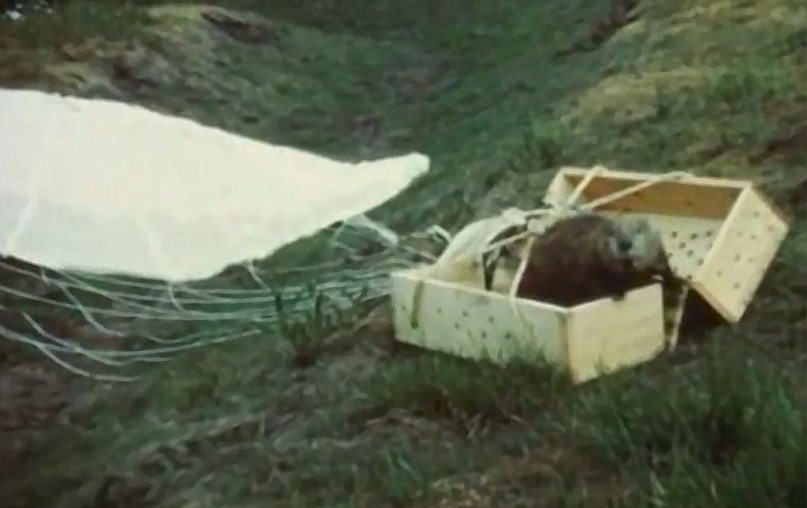Every few years, the public crowns a new peoples’ princess of the animal kingdom. Remember all those “Save the Bees” slogans, stickers, license plates, hashtags, gift mugs, and graphic t-shirts a few years back? Remember the early 2010s, when people couldn’t get enough of narwhals and llamas? Kids these days obsess over snails and frogs (perhaps watching too many slime TikToks before their skulls fully fused did a number on their subconscious preferences). Well, now, in 2024, I predict another regime change. Once the current monarch falls, we will unanimously select a new ruler: the beaver.
My proposition comes on the tail of great publications of nature writing of the past few years, particularly Leila Philip’s Beaverland: How One Weird Rodent Made America and Ben Goldfarb’s Eager: The Surprising, Secret Life of Beavers and Why They Matter. Plus, there’s the commercial powerhouse of Buc-ee’s, spreading through the Southeastern United States like a bad case of beaver fever. This beaver-themed chain of 120-pump gas stations attached to 74,000 square foot convenience stores has put many beaver-decorated hoodies, boxers, lunchboxes, sets of wrapping paper, plush toys, snack wrappers, baseball caps, ties, decorative cheeseboards, bathing suits, socks, and keychains into circulation. Perhaps my merch-and-literature case is shaky. Then, I also ask you also to consider how crucial beavers are to their environments.
 |
 |
As Leila Philip explains, beavers are the only animals besides humans who create their own habitats. Their dams, built from trees and shrubs, reshape America’s rivers. Their resulting beaver ponds, where the beavers live, are rich in biodiversity, bringing in birds and bugs. “Pond” calls to mind something a step above a puddle, but beavers sequester, on average, a million gallons of water per pond. According to Philip, the ground underneath the ponds holds millions more gallons, which act as a reservoir during droughts. These earthy sponges also absorb excess floodwater, and filter out contaminants before the water can seep into aquifers.
Humans have a perilous history with this massive mammal. In the 16th century, European settlers trafficked heavily in beaver pelts from North America. According to Wikipedia, there was no tax or tariff imposed on these furs, and traders were further incentivized to hunt in America by the depleting beaver populations back in Europe. Philip says, this fur trade jumpstarted the North American economy, transatlantic trade, and westward expansion. The first American multimillionaire made his fortune in beaver pelts. But beavers are not infinite; overhunting nearly wiped them out.
In the present day, beavers are common again, and often treated as a nuisance. They ruin crops, roads, gardens, and more with their dam practices. But also, their role as environmental stewards is getting greater recognition. Consider the Beaver Drop of 1948. According to Wikipedia, post WWII, folks relocated from urban to rural areas of Idaho, bringing more people into contact with nuisance beavers. The state’s Department of Fish and Game was swamped with complaints of destroyed property. At the same time, central Idaho’s wetlands were in disarray, with beaver populations decimated by previous fur trade. For years, beavers had already been relocated between different parts of the state, but ground transportation proved stressful, with beavers overheating, freaking out, and even dying in the process. Then came the genius plan by Elmo W. Helm to reuse old parachutes and lidded boxes, WWII leftovers, to simply parachute the beavers from overpopulated Northwestern Idaho to the central, beaver-hungry parts of the state. A beaver named Geronimo was the first test subject, and so the rodents took flight. The operation proved successful: 76 beavers found a new home.
 | ||||||
| Geronimo! Beavers parachuting down. |
 |
| Beaver safely landed. |
Beavers are involved in other ambitious environmental plans. Philip describes beaver ponds in California acting as buffers against wildfires. A University of Wisconsin study concluded that bringing beavers into the Milwaukee River’s watershed would store nearly 1.7 trillion gallons of annual stormwater. Organizations like the Beaver Institute provide tips for coexistence with beavers: pond leveler, culvert diversion fence, sand-based beaver-deterring paint on trees.
Beavers are no angels. They spread giardiasis (a nasty intestinal infection colloquially called “beaver fever”) and rabies. They attack pets and humans when threatened, and even killed a man in Belarus. They exacerbate global warming by causing floods in the Arctic that melt permafrost (that’s supposed to be PERMANENT FROST), which then releases the greenhouse gas methane. But this rodent only does what it knows best: building, and staying busy. They are not at fault when their industriousness collides with our industry. We have much to learn from their environmental practices, and hopefully, we can continue to be co-conspirators in the fight against climate change. Beavers rule!
Click below to buy beaver books from us:
Beaverland: How One Weird Rodent Made America: https://eagleeyebooks.com/book/9781538755204Eager: The Surprising, Secret Life of Beavers and Why They Matter: https://eagleeyebooks.com/book/9781603589086
No comments:
Post a Comment